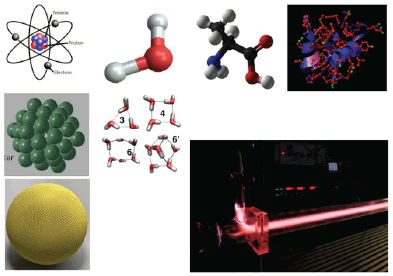Welcome to AtMol!
AtMol: Atomic and Molecular physics, diluted mater, atmosphere, univers
Welcome to AtMol!
AtMol: Atomic and Molecular physics, diluted mater, atmosphere, univers
Within the Dilute Matter Scientific Group, the objects we are dealing with are atoms, molecules,
clusters, non-covalent complexes and nanoparticles which are studied in a solvent-free and substrate-free environment. Because intermolecular and solvent-molecule interactions may be neglected, this “dilute matter” regime offers, as compared to condensed matter, the opportunity to study model or actual systems at the elementary level, with in general the help of ab initio calculations which can be carried out at the highest level. Besides, dilute matter is optically thin, therefore it can be studied continuously over the whole spectrum, and especially in the spectral range covered by the SOLEIL beamlines, from the far IR to the tender X-rays.
With the large array of complementary associated techniques available or under development on our beamlines, we are able to interrogate these isolated species over a vast energy range in conditions such that a single photon interacts with a single molecule. Such studies provide us with a better knowledge of fundamental photon/matter interaction, intra- and intermolecular processes as well as subsequent dynamics. This crucial information on elementary bricks of matter can be used to understand and build up more complex and structured matter.
Very schematically, our scientific activity cover 3 main axes:
• Fundamental research on dilute samples: molecular structures and photodynamics
• Towards interfaces with other scientific fields: chemistry, biology, astronomy & astrophysics and planetary science
• Instrumental developments.

|
Research areas : |
technique of analysis |
|---|---|
Gas Phase
|
Absorption
Photoelectron emission
Ion Spectroscopy
Scattering |